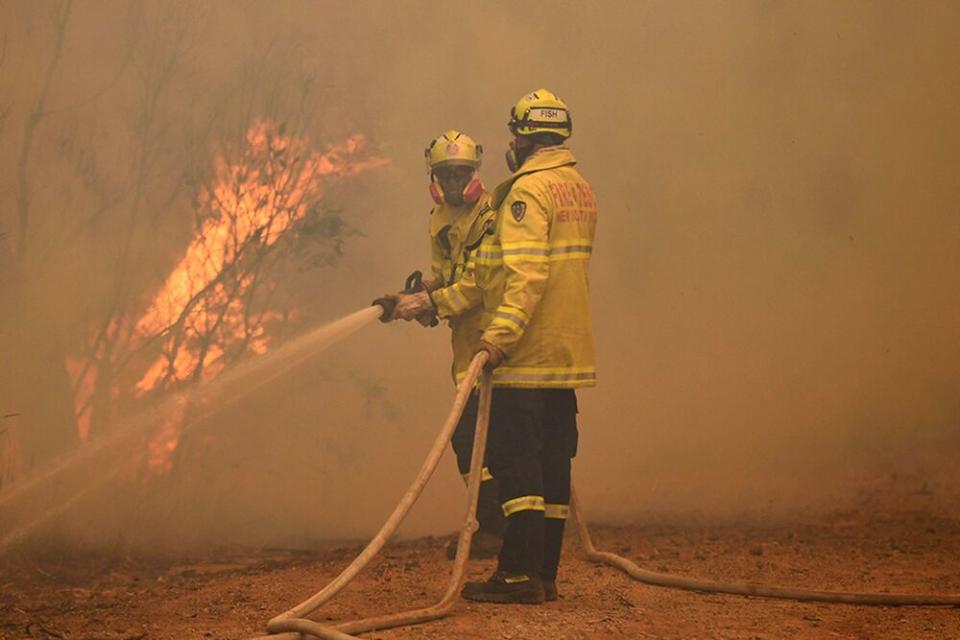Ecologists Worry Wildlife Has a 'Bleak Future' as Australia Fires Propel Extinction Crisis

As horrific wildfires continue to tear through Australia, destroying homes, ecosystems and over half a billion animals, ecologists fear that several species are at risk of becoming extinct.
Numerous species native to Australia were already on the path to extinction ahead of the fires, ecologists pointed out, which now makes conservation efforts nearly impossible as millions of animals have likely perished in the fires.
In a new investigation published by The Guardian on Friday, experts explain that the fires are pushing back conservation efforts by decades as “many dozens” of threatened species have been destroyed, to the point of “entire distributions” being burnt.
“It feels like we have hit a turning point that we predicted was coming as a consequence of climate change,” Australian National University Professor Sarah Legge told the outlet. “We are now in uncharted territory.”

For example, much of the southern brown bandicoot population — part of Australia’s rare dunnart species — has been killed off as several Land for Wildlife sites, which protect endangered species, were completely destroyed by the fires.
RELATED: Half a Billion Animals, Including 8,000 Koalas, Feared Dead from Devastating Australian Wildfires
“The fires are of such scale and extent that high proportions of many species, including threatened species, will have been killed off immediately,” explained Charles Darwin University Professor John Woinarski.
While there has been footage of animals such as kangaroos and flocks of birds trying to escape the fires, experts said evidence of their survival still remains unknown.
“We know that the species that can’t fly away – like koalas and greater gliders – are gone in burnt areas,” Woinarski added.

Additionally, the long-footed potoroo, the silver-headed antechinus, Hastings River mouse, rufous scrub-bird, and the brush-tailed rock-wallaby among other species and plants have been in areas that were completely “toasted” and “obliterated by fires.”
While the fires are burning many animals alive, they’re also destroying vegetation and food sources that animals depend on to survive.
Many wombats, for example, may survive the fires because they can hid underground, but, Woinarski noted, “even if they do escape the immediate fire front, there’s essentially no food for them in a burnt landscape.”
RELATED: How to Help Australian Fire Victims and the Half a Billion Animals Impacted by the Blazes
Ecologists worry that if this is only the beginning of climate change, what worse things could happen in the future?
“This is really concerning, not just for the impact that this event will have, but the prospect of this happening on a regular basis is really quite terrifying, and it will be to the point where forest ecosystems have changed to have a different character. When they change you definitely lose species,” conversation ecologist Professor Brendan Wintle told The Guardian.
“This is a harbinger of a bleak future for our wildlife,” Woinarski said.

Even more, some of the smaller-scale deaths from the bushfires aren’t being taken into account.
“We don’t see these smaller animals being incinerated,” said Professor Richard Kingsford, director of the University of New South Wales Centre for Ecosystem Science. “There is a silent death going on.”
The brushfire crisis has claimed the lives of at least 17 people and burned through more than 11 million acres since it sparked in September. A seven-day state of emergency was declared on Dec. 23 and more than 130 fires continue to burn across New South Wales and Victoria.
With strong winds and high temperatures expected to come in, officials are warning residents that they could create incredibly dangerous conditions — even worse than past weeks — and are mandating that those in affected areas evacuate.
For more information on how to help those affected by the fires, click here.
